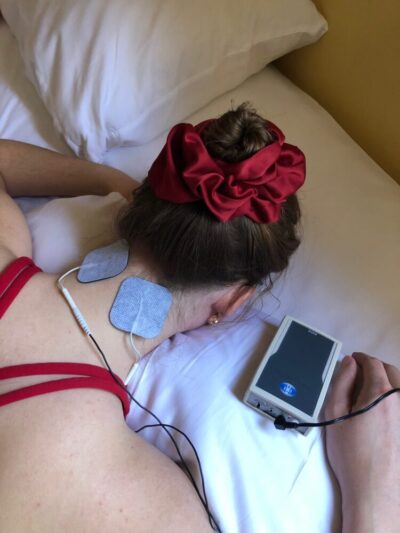A migraine is a common neurological disease that causes a variety of symptoms, most notably a throbbing, pulsing headache on one side of your head. Your migraine will likely get worse with physical activity, lights, sounds or smells. It may last at least four hours or even days. About 12% of Americans have this genetic disorder. Research shows that it’s the sixth most disabling disease in the world.
There are several types of migraines, and the same type may go by different names:
- Migraine with aura (complicated migraine): Around 15% to 20% of people with migraine headaches experience an aura.
- Migraine without aura (common migraine): This type of migraine headache strikes without the warning an aura may give you. The symptoms are the same, but that phase doesn’t happen.
- Migraine without head pain: “Silent migraine” or “acephalgic migraine,” as this type is also known as, includes the aura symptom but not the headache that typically follows.
- Hemiplegic migraine: You’ll have temporary paralysis (hemiplegia) or neurological or sensory changes on one side of your body. The onset of the headache may be associated with temporary numbness, extreme weakness on one side of your body, a tingling sensation, a loss of sensation and dizziness or vision changes. Sometimes it includes head pain and sometimes it doesn’t.
- Retinal migraine (ocular migraine): You may notice temporary, partial or complete loss of vision in one of your eyes, along with a dull ache behind the eye that may spread to the rest of your head. That vision loss may last a minute, or as long as months. You should always report a retinal migraine to a healthcare provider because it could be a sign of a more serious issue.
- Chronic migraine: A chronic migraine is when a migraine occurs at least 15 days per month. The symptoms may change frequently, and so may the severity of the pain. Those who get chronic migraines might be using headache pain medications more than 10 to 15 days a month and that, unfortunately, can lead to headaches that happen even more frequently.
- Migraine with brainstem aura. With this migraine, you’ll have vertigo, slurred speech, double vision or loss of balance, which occur before the headache. The headache pain may affect the back of your head. These symptoms usually occur suddenly and can be associated with the inability to speak properly, ringing in the ears also known as tinnitus and vomiting.
- Status migrainosus. This is a rare and severe type of migraine that can last longer than 72 hours. The headache pain and nausea can be extremely bad. Certain medications, or medication withdrawal, can cause you to have this type of migraine.
Headaches caused by Covid and Influenzas can result in severe pain and are usually brought on by sinus pressure from mucus buildup.
References
Efficacy of cranial microcurrent stimulation in patients with tension-type headache: A prospective, randomised, double-blinded, sham-controlled clinical trial
Results: In CMS group, VAS of maximal headache and VAS of current headache, HIT6, PHQ9 and GAD7 significantly decreased by two weeks post-CMS therapy, but not in Sham group (P < .05). Scores of HADS-A (anxiety), HADS-D (depression) and HADS-T (total) significantly decreased by 2 weeks post-CMS therapy in CMS group, but not in Sham group (P < .05). Changes in scores of PHQ9 and GAD7, HADS-A, HADS-D and HADS-T in CMS group were significantly greater than in Sham group by 2 weeks post-CMS therapy (P < .05).
Conclusion: The results indicate that CMS, as an adjunctive treatment for patients with TTH, is safe and analgesic as well as reducing depression or anxiety.
https://pubmed.ncbi.nlm.nih.gov/34096661/

The CellStim advanced waveform calms down brain wave
activity resulting in rapid reduction of headaches and migraines

